Is the Walther LGU the springer for you? Tim Finley thinks it could be
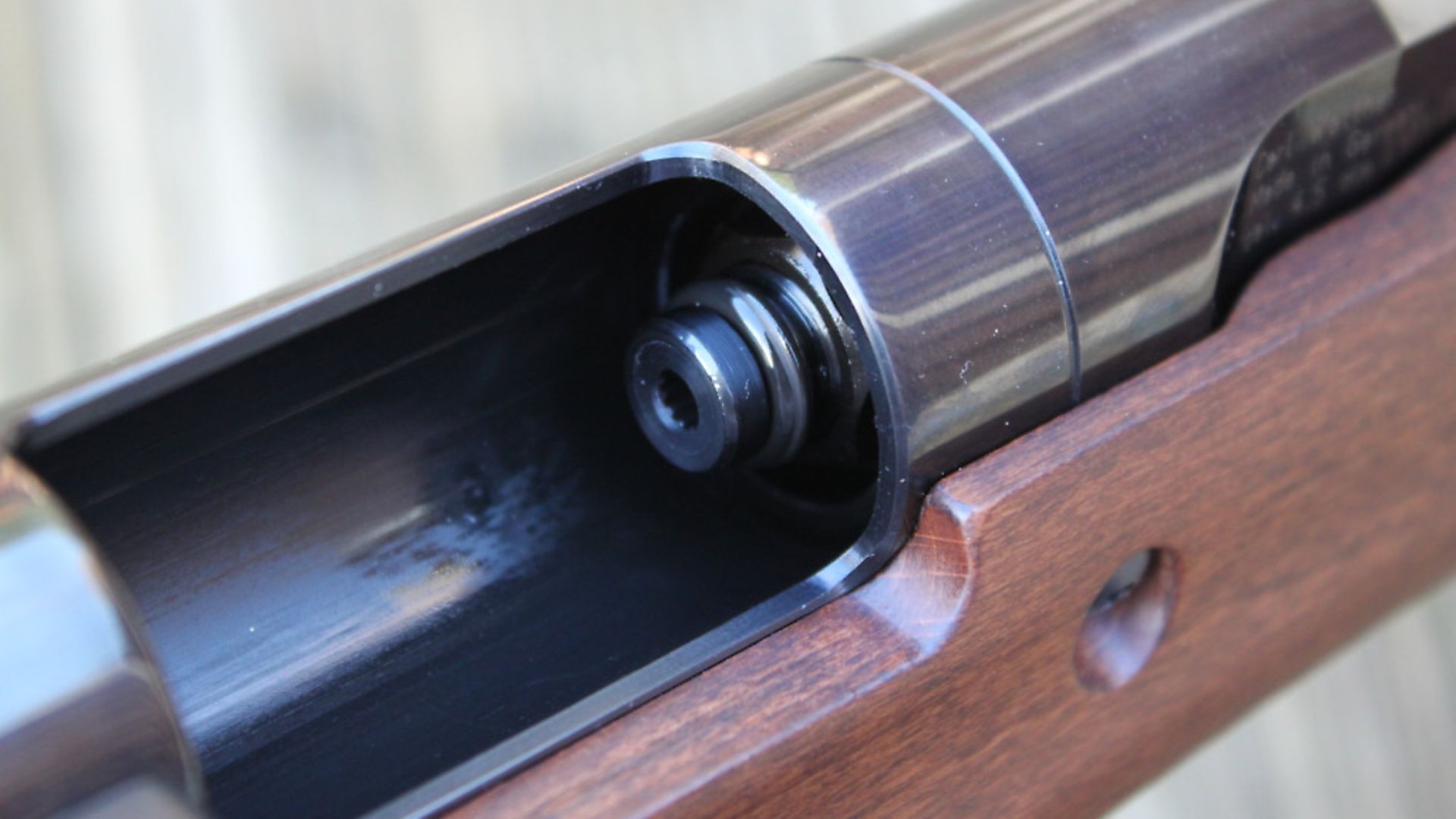 credit: Archant
credit: Archant
We have a real gem of a top value gun this month. The new breed of Walther under-levers, have proved to be a step change in the world of spring-powered air rifles. Yes, Walther were pretty late to the game, but what they came up with is indeed at the cutting-edge of spring-rifle technology. We all know that fixed-barrelled spring rifles should be more consistently accurate than break-barrelled ones, that’s a given, but the LGU has some other tricks up its Teutonic sleeve, and more on that later.
First impressions for me were kicked off by the box, which in itself is much better than the average plain brown cardboard jobby. This one’s a grey logo’d box that the rifle fits into snugly and safely – and getting the gun out of the box had me thinking, ‘What a beast!’
because it’s not a light gun, weighing in at 4.3kg without fitting a scope and mounts. Yes, this is without a doubt an adult springer and other things caught my eager eye; the blueing on the steel cylinder is very well done, deep and rich, and it’s a quality made item, the only real synthetics on show being the two black ‘O’ rings on the end of the cocking arm, although why you would reach for the ‘O’ ring bin, rather than fitting, say, a machined Delrin, knurled cocking aid, is beyond me. The beech stock is a plain deep brown, but enough of the aesthetics and on to the impressive mechanics.
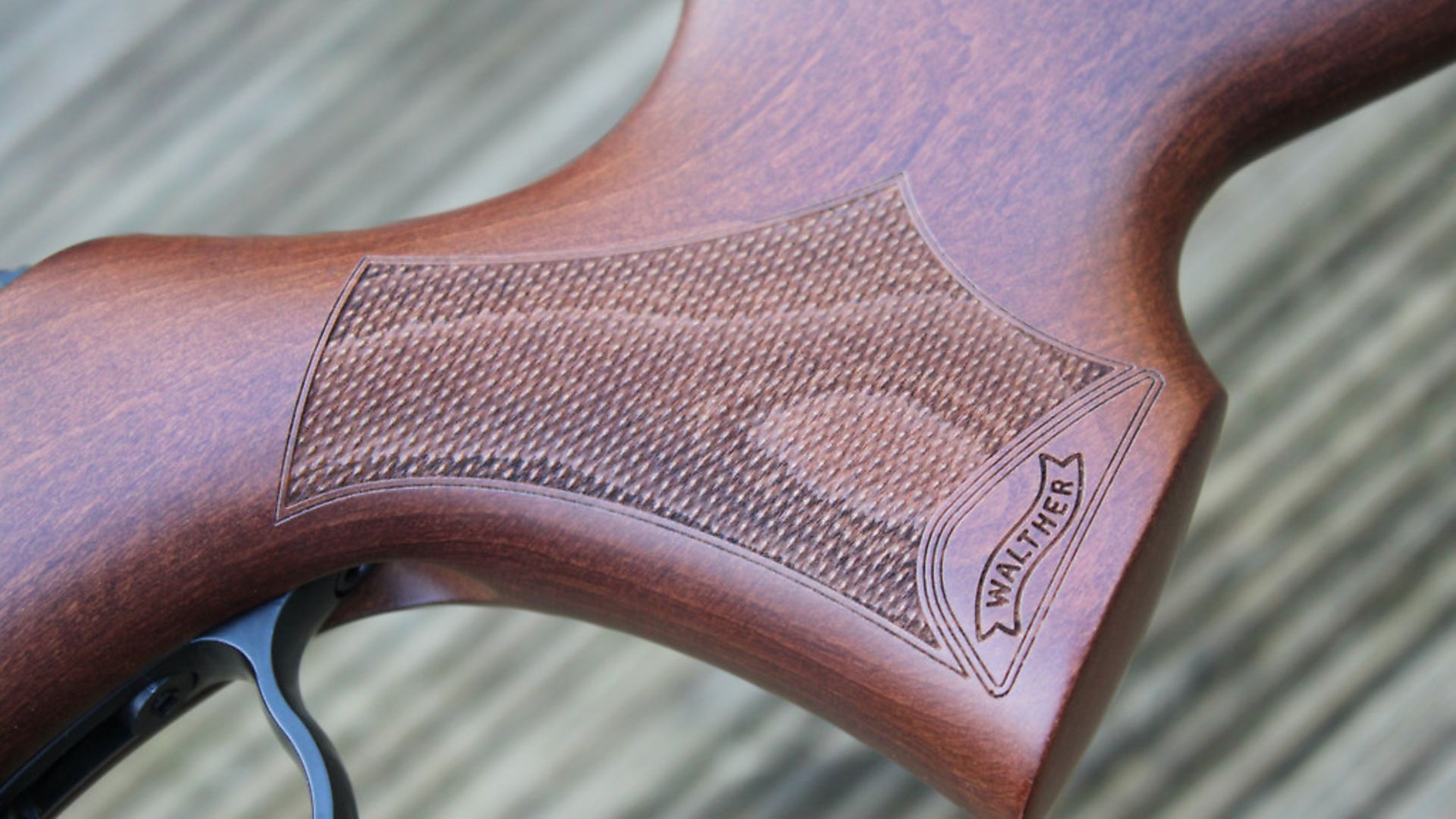 credit: Archant
credit: Archant
Under-level cocking
The break-barrelled rifle is under-lever cocking, of course. This has a safety device on the right-hand side of the action that forms the anti-bear trap device, which at the cocking stroke then sets the safety catch to safe. It gives off audible clicks as the piston cut-outs move over the spring-loaded lever. The safety catch is ambidextrous, set smack, bang on the centerline of the rifle at the back of the action. It moves backwards onto ‘safe’ on cocking, with a handy ‘S’ telling you that it is. The really good thing about this safety catch is that it blocks the trigger, so it can be reset – i.e. moved at any time between ‘safe’ and ‘fire’.
To close the under-lever, the front of the anti-bear trap device has to be manually pushed in. The under-lever is held shut with a steel ball detent, and the two aforementioned ‘O’ rings stop the under-lever from hitting the underside of the barrel.
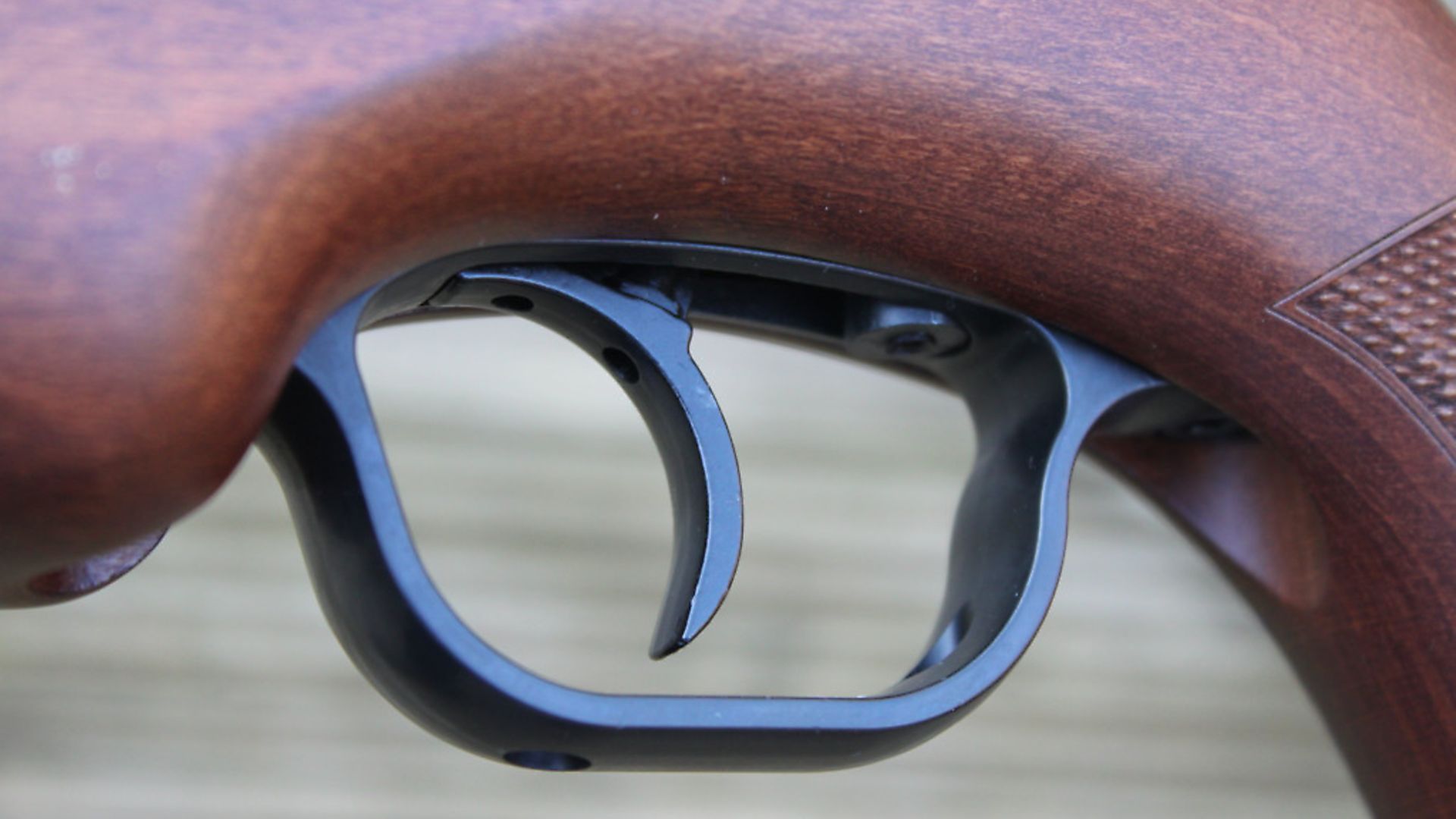 credit: Archant
credit: Archant
A bit of class
I also love the raised pellet detailed on the back of the lever. It reminds the owner of which way around the pellets go, and adds a bit of class, if you ask me. The firing cycle of the action is very smooth. For good reason, the piston is free to rotate around its axis upon firing, virtually eliminating the torque that can be caused by the mainspring uncoiling. In addition, the piston skirt and outer side of the spring sleeve run on Delrin rings, and they combine to give a smooth, quiet and almost ‘dead’ firing cycle. Walther term this as their Silent Spring Technology (SST) and Vibration Reduction System (VRS). Over the chronograph, with 7.9 grain domed-head pellets, the rifle came in at 807fps – that’s 11.45 ft.lbs. The firing cycle on the LGU is very smooth, as you would expect for an ultra-modern spring rifle.
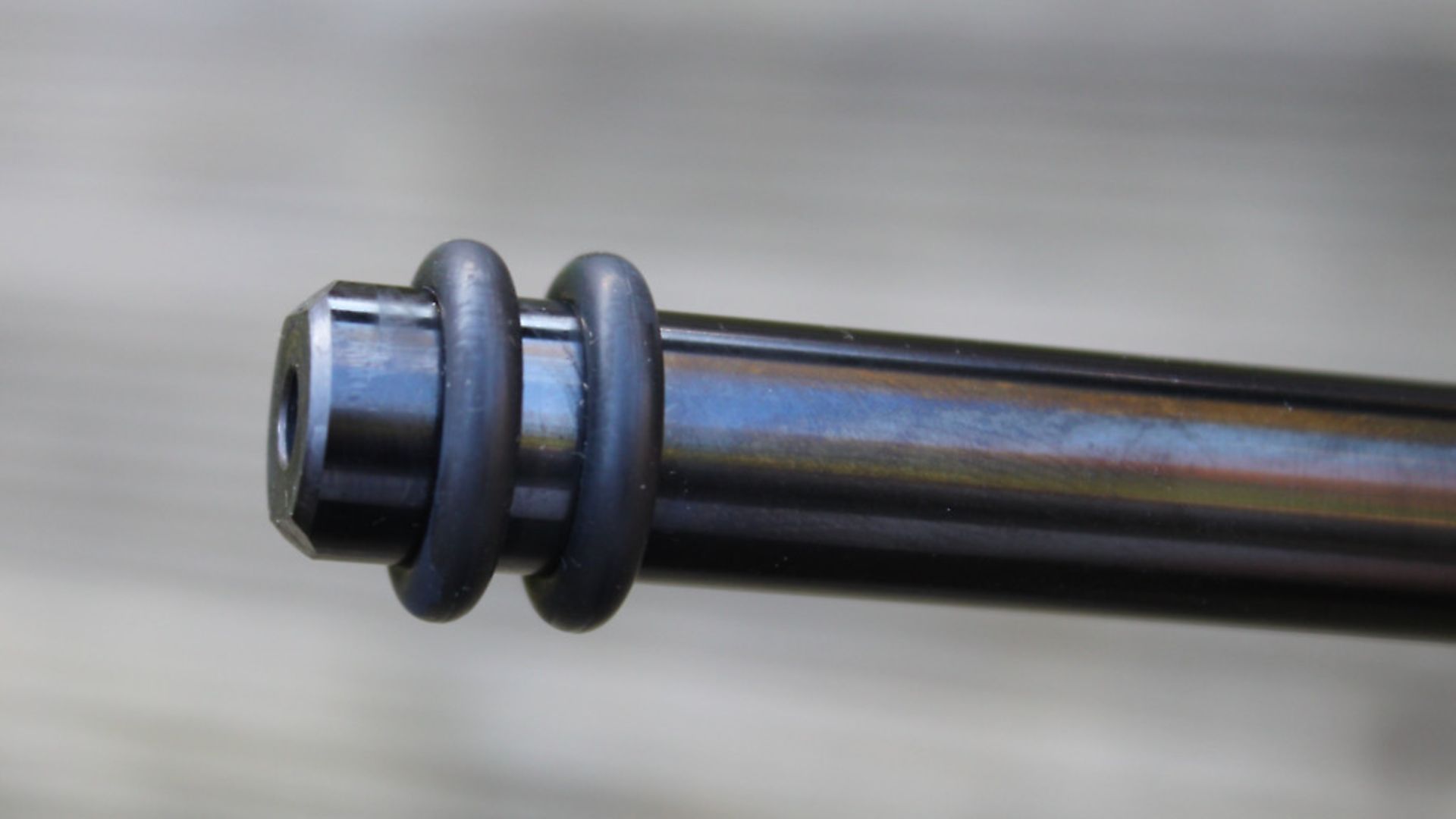 credit: Archant
credit: Archant
Great grouping
The 11mm sight rail is 170mm long with three recoil arrestor holes at the rear. I fitted a Hawke 4-16 with a multipoint reticle and parallax adjustment scope to test out the LGU’s range capabilities. Once I had dialled back into FT mode, 1980s-style, the gun came alive, or dead, if you will, because the firing cycle is so tame. Sub-25mm groups at 45 yards are the norm with the LGU – very nice indeed!
I particularly liked the stock, the design of which for once takes into account the fact that you fit a scope; other manufacturers, please take note. The stock is deep enough to handle standing and kneeling shots, and the groove running down each side adds to the ergonomics. The trigger has a part to play in the accuracy of the LGU. It’s adjustable for first-stage travel and pull weight and it was factory set at 970 grams, which is light for a springer, but I found it very good. The only area of chequering on the stock is on the pistol grip, finished off with the Walther logo, and the Schnabel tip is a nice touch too.
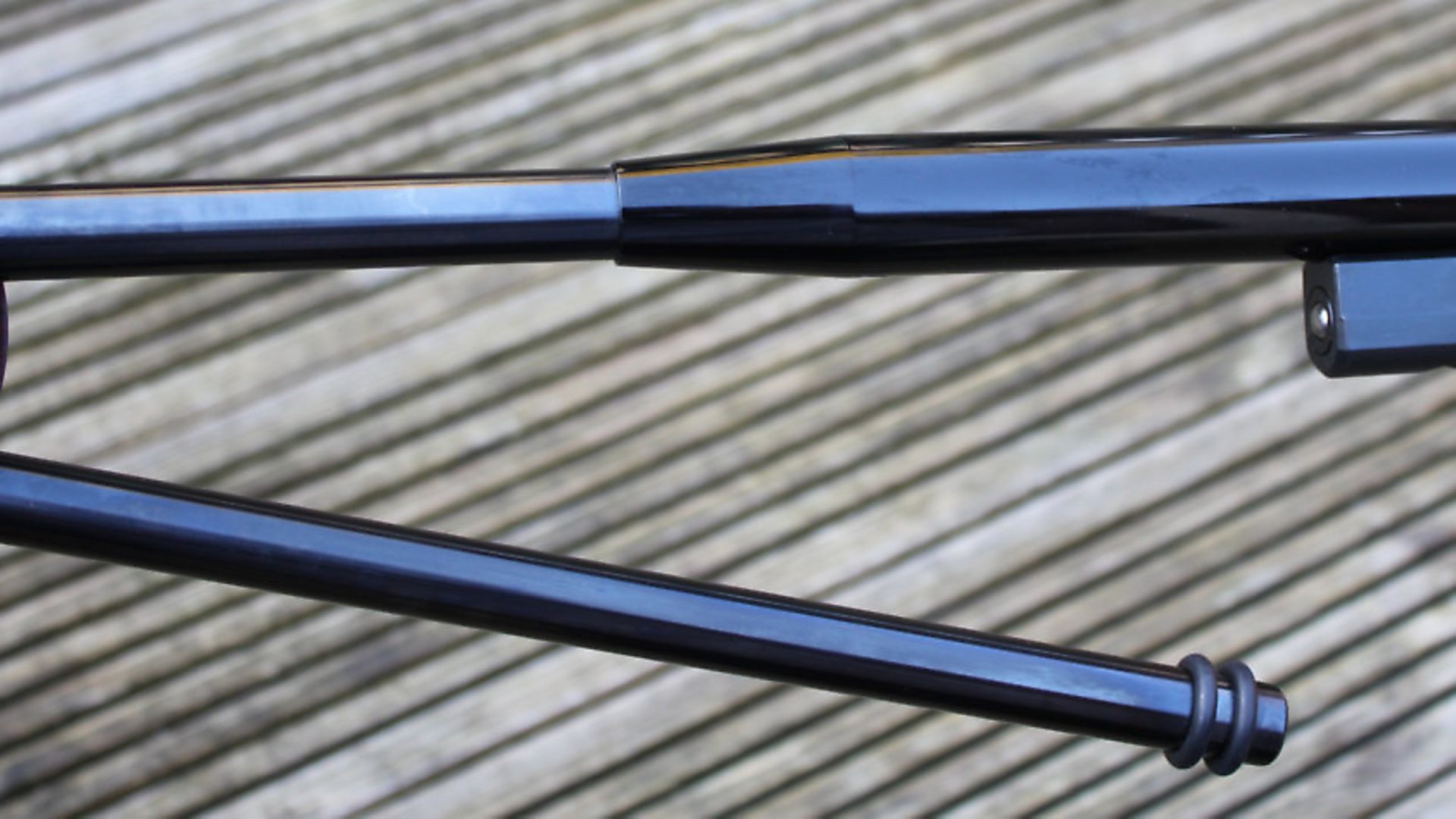 credit: Archant
credit: Archant
Verdict
I am really impressed with the Walther LGU. I wasn’t sure what to expect from a Walther spring rifle, because I’d never shot one before. I grew up with an HW77 FT, shooting in the late 1980s, and won a TX200 back in 1991, so I know my way around those two very well indeed.
How does it compare? Very well, I must say. Saying that, would I own and shoot one myself? Yes, I think I would. The standard stock on the LGU is excellent; it needs little tuning thanks to the use of modern materials in the power plant – and it’s affordable. Get rid of the ‘O” rings and make the loading ambidextrous, and Walther will make a great rifle near-perfect. It surely is a real classic in the making.
Specification:
Distributor: Armex 0121 6434900
Manufacturer: Walther
Country of origin: Germany
Model: LGU Master
Type: Spring-powered air rifle
Barrel length: 285mm (385mm with shroud)
Calibre: .177 on test, .22
Action: Under-lever
Sights: None
Trigger: Two-stage adjustable
Trigger pull weight: 0.970kg
Length of pull: 370mm
Overall length: 1064mm
Weight: 4.3kg
RRP: £399.99
See more tests on Walther guns...
Walther Century Varmint
Editor’s gun test: Armex Walther Rotex RM8 Varminter Kit